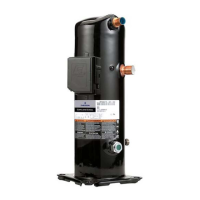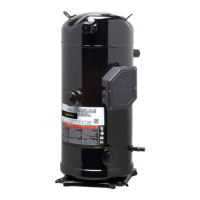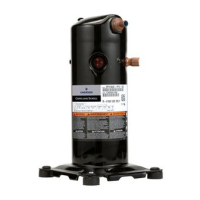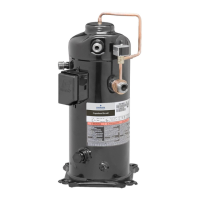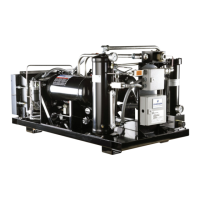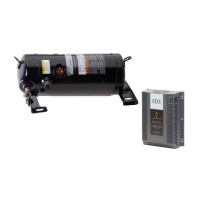AE4-1312 R2
© 2010 Emerson Climate Technologies
Printed in the U.S.A.
9
The system should be operated at an indoor temperature
of 70°F (21°C). and outdoor temperature extremes (0°F
or -18°C or lower in heating) to produce ood back
conditions. The compressor suction and discharge
pressures and temperatures as well as the sump
temperature should be recorded. The system should
be allowed to frost up for several hours (disabling the
defrost control and spraying water on the outdoor coil
may be necessary) to cause the saturated suction
temperature to fall to below -10°F (-23°C). The
compressor sump temperature must remain above the
sump temperature shown in Figure 1 or design changes
must be made to reduce the amount of ood back. If an
accumulator is used, an oil return orice size of 0.040
- .055” (1 - 1.4 mm) is recommended. (See information
on Accumulators in Application Considerations and also
AE11-1247). Increasing indoor coil volume, increasing
outdoor air ow, reducing refrigerant charge, decreasing
capillary or orifice diameter, and adding a charge
compensator can also be used to reduce excessive
continuous liquid refrigerant ood back.
To test for repeated excessive liquid ood back
during normal system off-cycles perform the “Field
Application Test”. Obtain a sample compressor
with a side sight tube to measure liquid level in the
compressor. Set the system up in a conguration with
the indoor unit elevated several feet above the outdoor
unit with twenty-five feet (8 meters) of connecting
tubing with no traps between the indoor and outdoor
units. If the system is designed to be eld charged,
the system should be overcharged by 15% in this
test to simulate overcharging commonly found in eld
installations. Operate the system in the cooling mode
at the outdoor ambient, on/off cycle times, and number
of cycles specied in Table 2. Record the height of the
liquid in the compressor at the start of each on cycle,
any protector trips, or any compressor stalls during
each test. Review the results with Emerson Climate
Technologies Application Engineering to determine
if an accumulator is required for the application. The
criteria for pass/fail is whether the liquid level reaches
the height of the scroll compressor suction tting on the
side of the shell. Liquid levels higher than the suction
tting will allow compressor oil oating on top of the
refrigerant to be ingested by the scrolls and pumped
out of the compressor.
